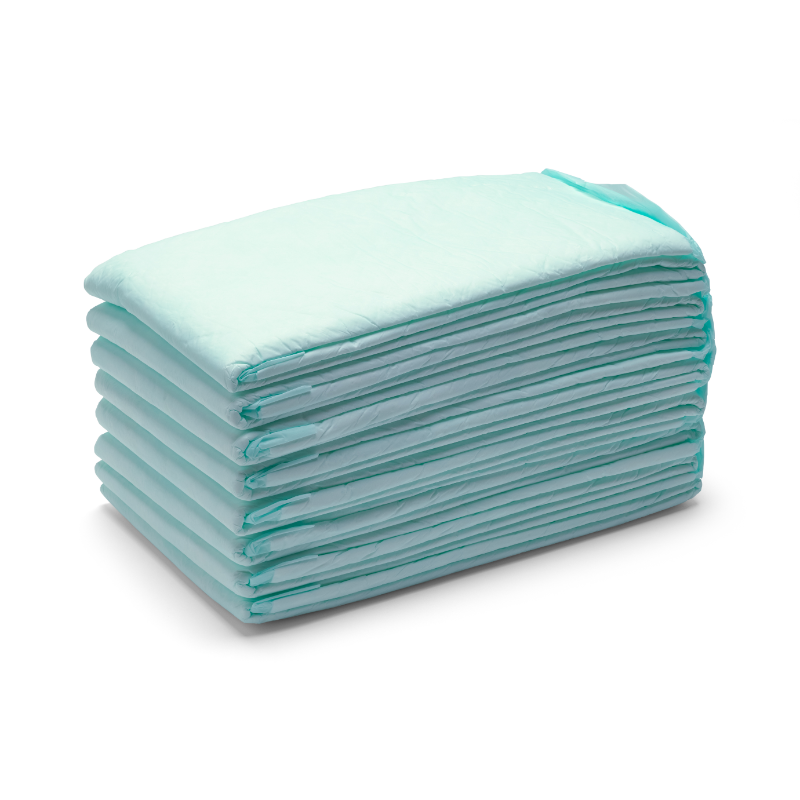Introducción
Disposable hospital bed pads are a crucial component in the management of incontinence in healthcare settings. These pads offer a practical and hygienic solution to protect bedding and mattresses while providing comfort to patients.
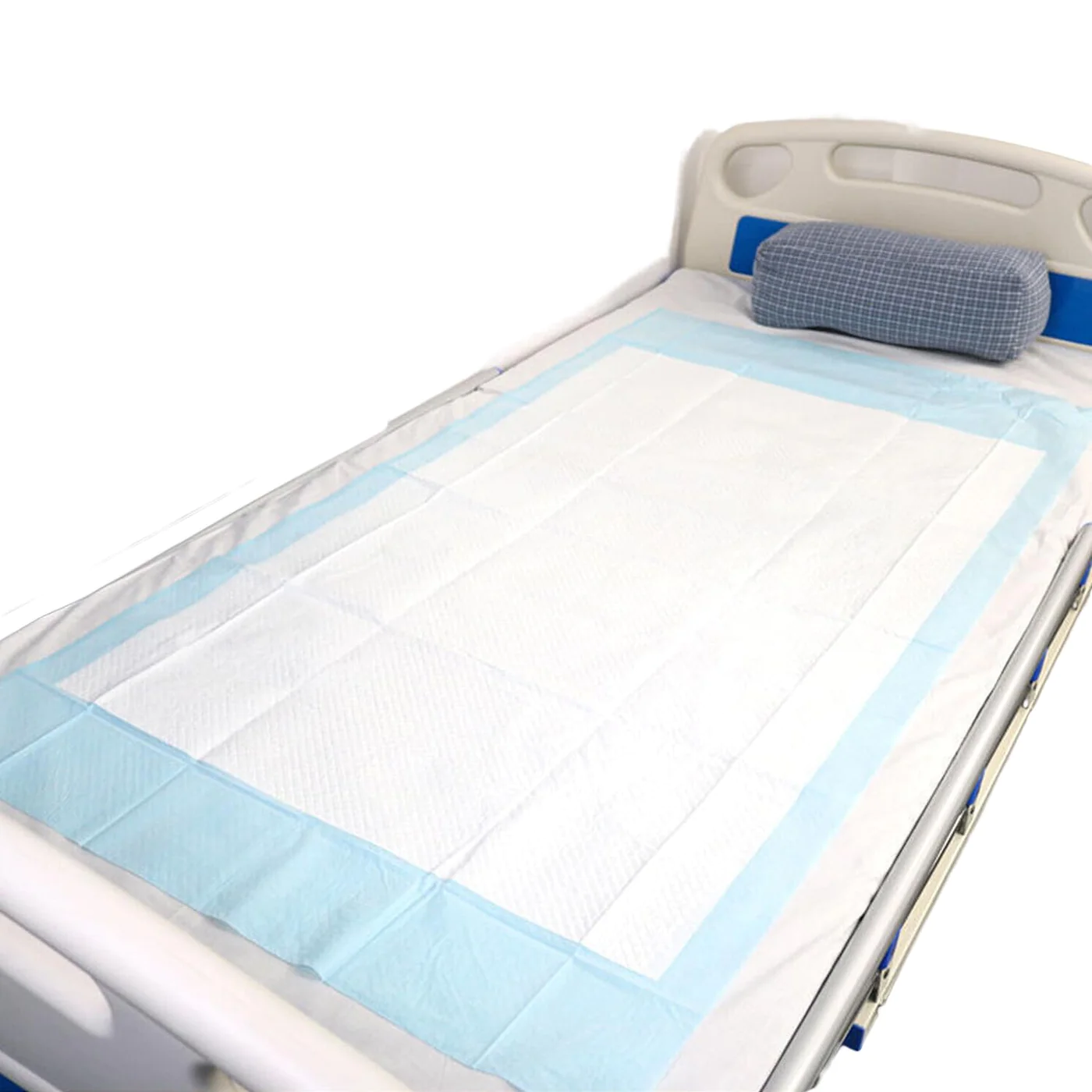
Understanding Disposable Bed Pads
Disposable bed pads, commonly referred to as ‘chux’, play a pivotal role in healthcare, particularly in managing incontinence. These pads are specifically designed to offer a high level of absorbency for body fluids, predominantly urine, thereby safeguarding bedding, mattresses, and furniture from moisture and potential damage.
1. Composition and Design
- Layered for Absorbency: Disposable bed pads are typically constructed with multiple layers, each serving a specific purpose. The top layer, which comes in direct contact with the user, is often soft and gentle on the skin to provide comfort. The middle layers are made of absorbent material, usually a combination of fluff pulp and super absorbent polymers, to efficiently soak up fluids.
- Revestimiento impermeable: The bottom layer of these pads is usually a waterproof barrier, often made of polyethylene or a similar material. This layer prevents any leaked fluids from seeping through to the bedding or furniture, thereby offering maximum protection.
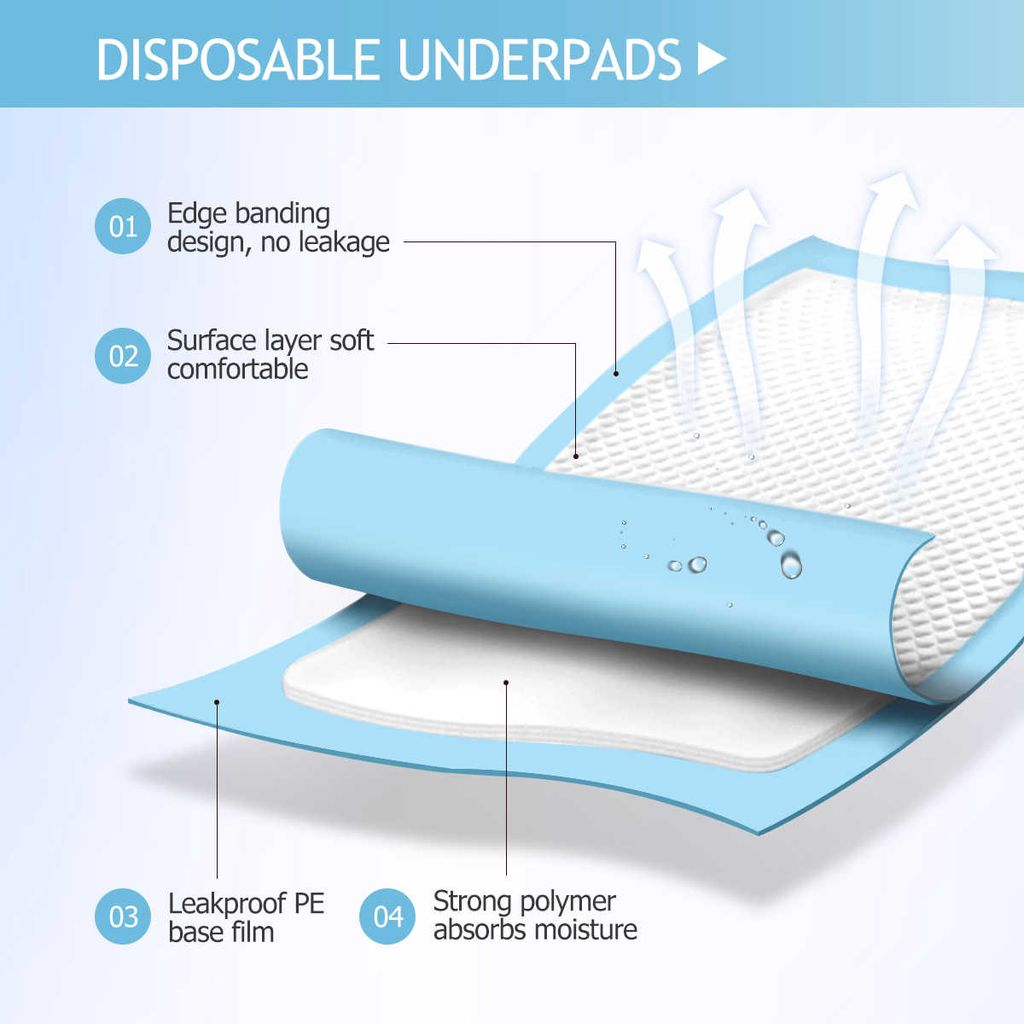
2. Use in Healthcare Settings
- Incontinence Care: In hospitals and long-term care facilities, disposable bed pads are an essential component of incontinence care. They are used not only to protect the patient’s bedding and surrounding area but also to maintain a hygienic environment.
- Versatilidad de aplicación: Besides bed use, these pads can be utilized in various other ways in medical settings, such as on examination tables or wheelchairs, providing a versatile solution for maintaining cleanliness and comfort.
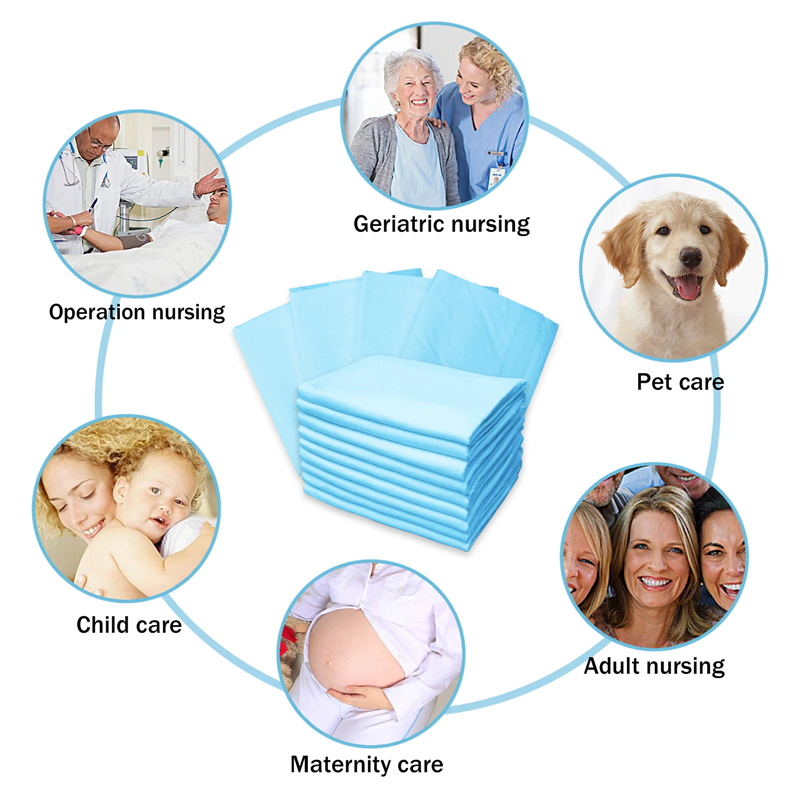
3. Benefits of Using Disposable Bed Pads
- Higiénico y cómodo: The disposable nature of these pads makes them a hygienic choice, as they can be easily discarded after use, reducing the risk of contamination and infection spread. This is particularly crucial in healthcare settings where maintaining high sanitary standards is essential.
- Ease of Care for Caregivers: For caregivers, disposable bed pads simplify the process of managing incontinence. They eliminate the need for continuous laundering of reusable pads, saving time and effort, and allowing caregivers to focus more on patient care.
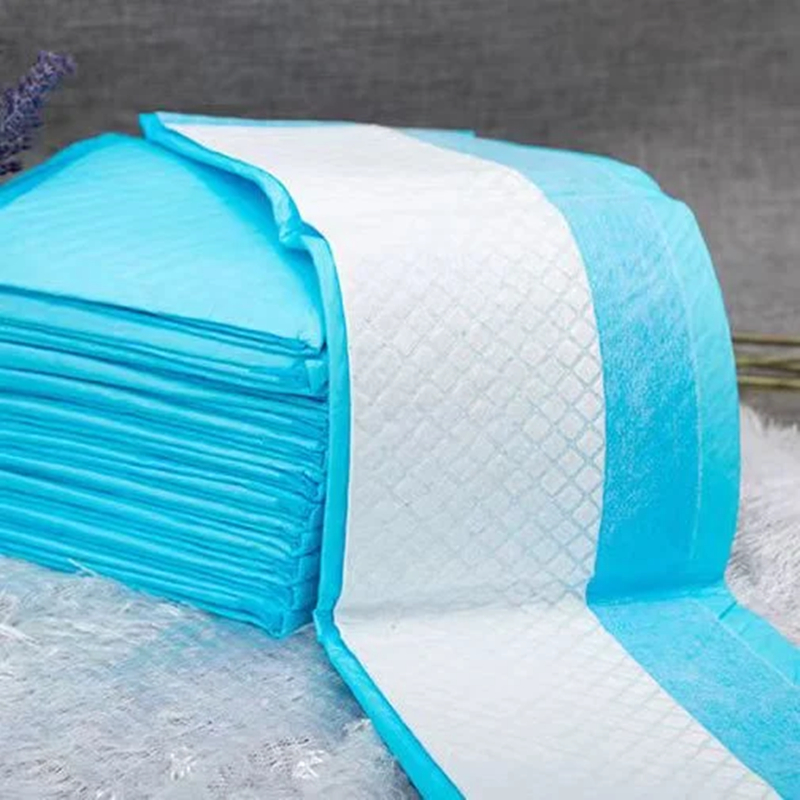
4. Importance in Long-Term Care Facilities
- Enhanced Patient Comfort: In long-term care facilities, where residents may suffer from chronic incontinence, disposable bed pads provide not only practicality in terms of maintenance but also enhance the comfort and dignity of the residents.
- Prevention of Bedsores: By keeping the bedding dry, these pads also play a role in preventing bedsores or skin irritations, which are common concerns in long-term care settings.
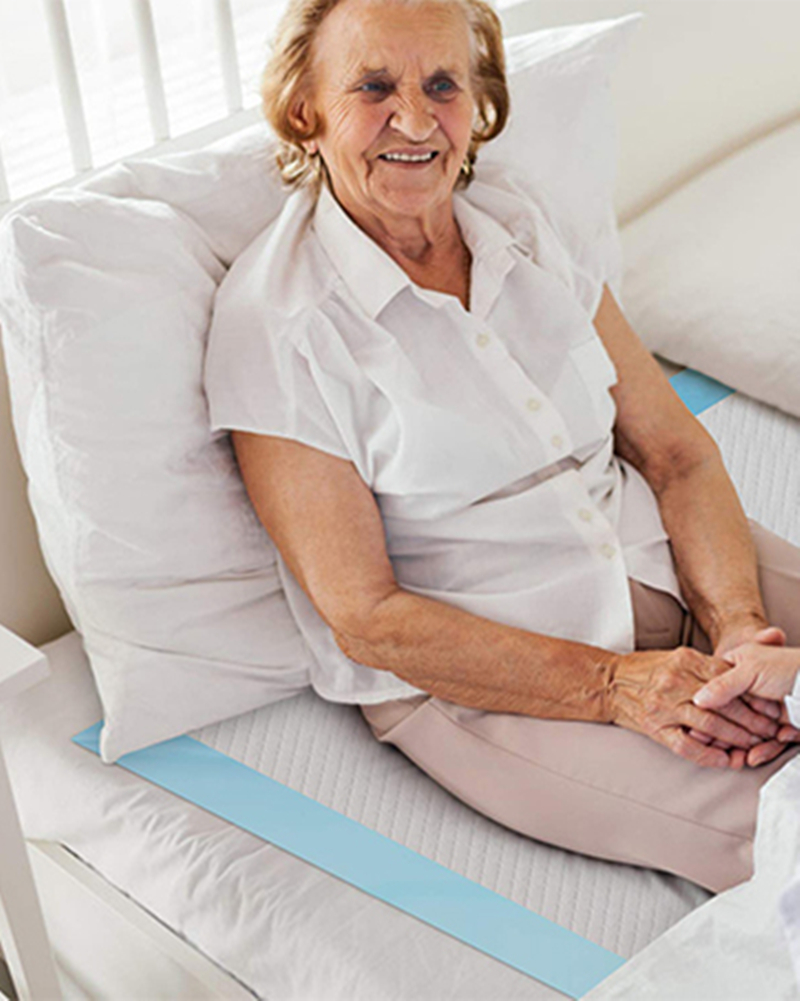
Tipos de cubrecamas desechables
Disposable bed pads are an essential item for managing incontinence, and they come in a variety of types to suit different needs. Understanding the range of options available can help in selecting the right pad for each individual situation. Here’s a look at the various types of disposable bed pads:
1. Maximum Absorbency Pads
- Designed for Heavy Incontinence: These pads are ideal for individuals with heavy incontinence. They are equipped with super absorbent layers capable of handling a large volume of liquid.
- Características principales: Maximum absorbency airflow underpads often include additional components like SAP (Super Absorbent Polymer) which turns liquid into gel, prevent leaks and ensure the surface remains dry.
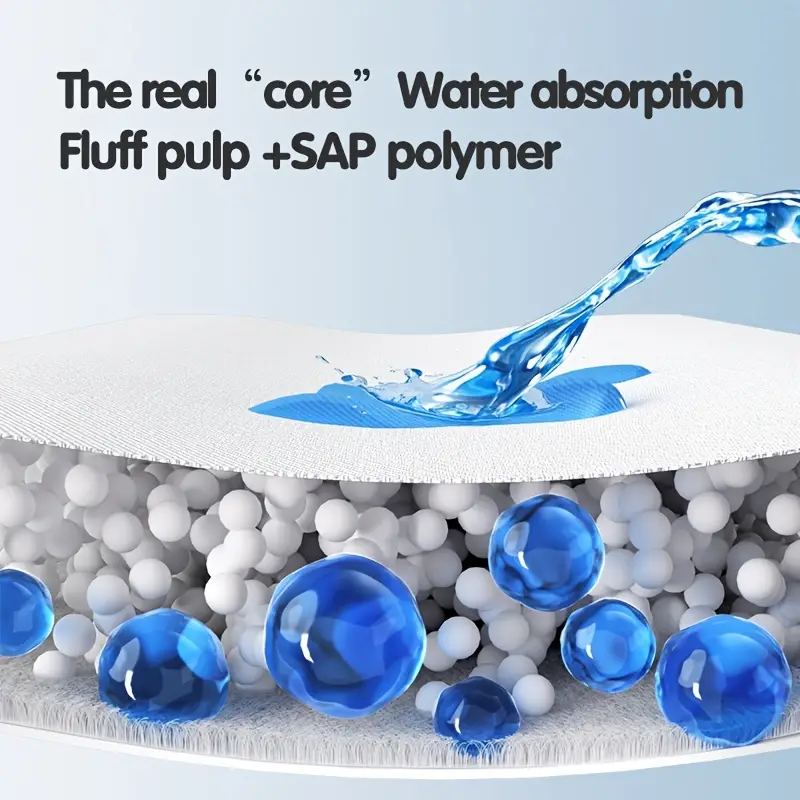
2. Absorbentes moderados
- Suitable for Lighter Incontinence: For those with moderate incontinence, these pads offer an effective solution. They provide sufficient absorbency for smaller leaks and are generally thinner and less bulky than their maximum absorbency counterparts.
- Comfort and Discretion: Along with protection, these pads offer the benefit of being less conspicuous, making them a comfortable choice for daytime use or for individuals who are mobile.
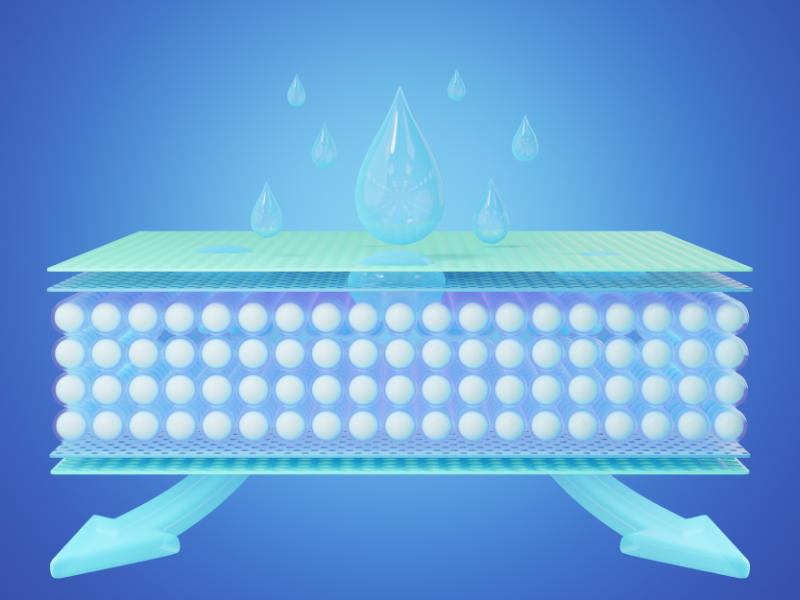
3. Specialized Bed Pads
- Targeted Designs: Some disposable bed pads are designed with specific features to cater to unique needs. This can include pads with adhesive strips to keep them in place, pads with wings or fitted sheet style to secure around a mattress, or pads shaped to fit specific furniture like chairs or car seats.
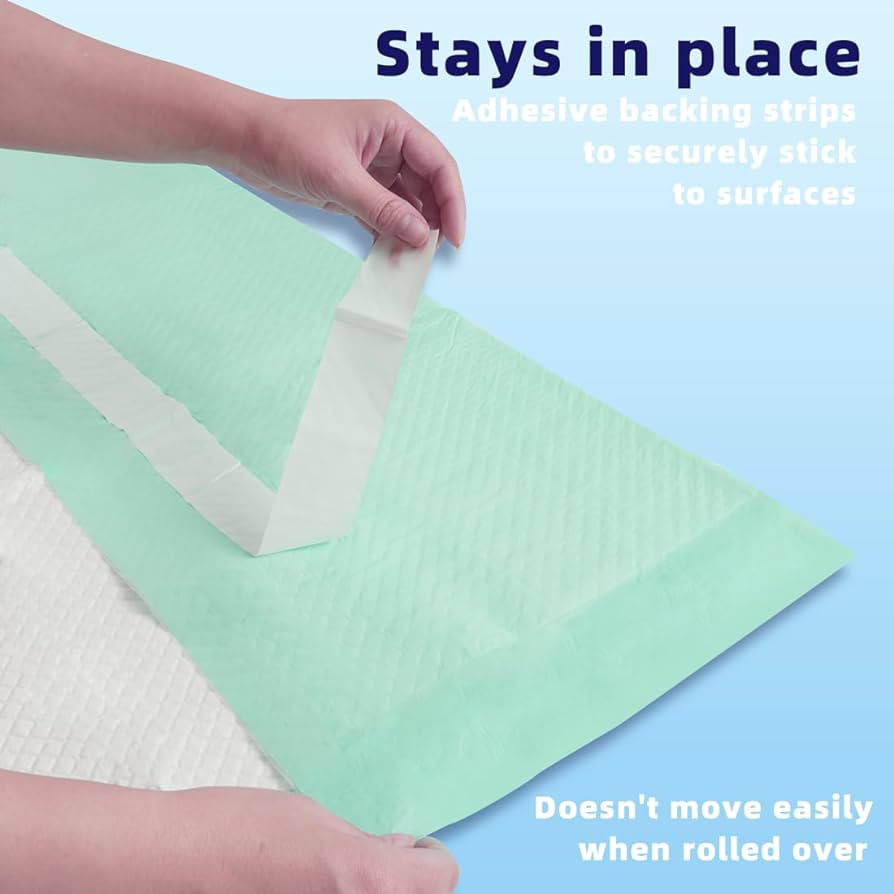
- Added Functionality: These specialized designs can offer additional security and convenience, making them suitable for a range of scenarios, from healthcare settings to home use.
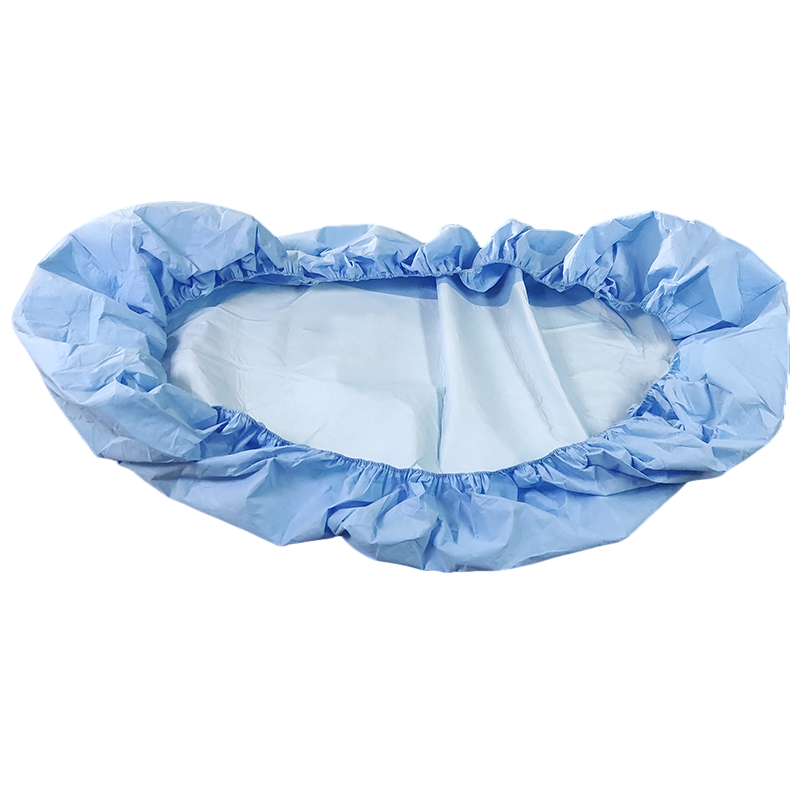
4. Disposable Underpads with Additional Features
- Odor Control and Breathability: Advanced disposable underpads may come with features like odor control technology to maintain freshness and breathable materials to promote air circulation, enhancing user comfort.
- Materiales respetuosos con la piel: Pads designed with soft, hypoallergenic top layers are also available, catering to users with sensitive skin or those requiring long-term use of bed pads.
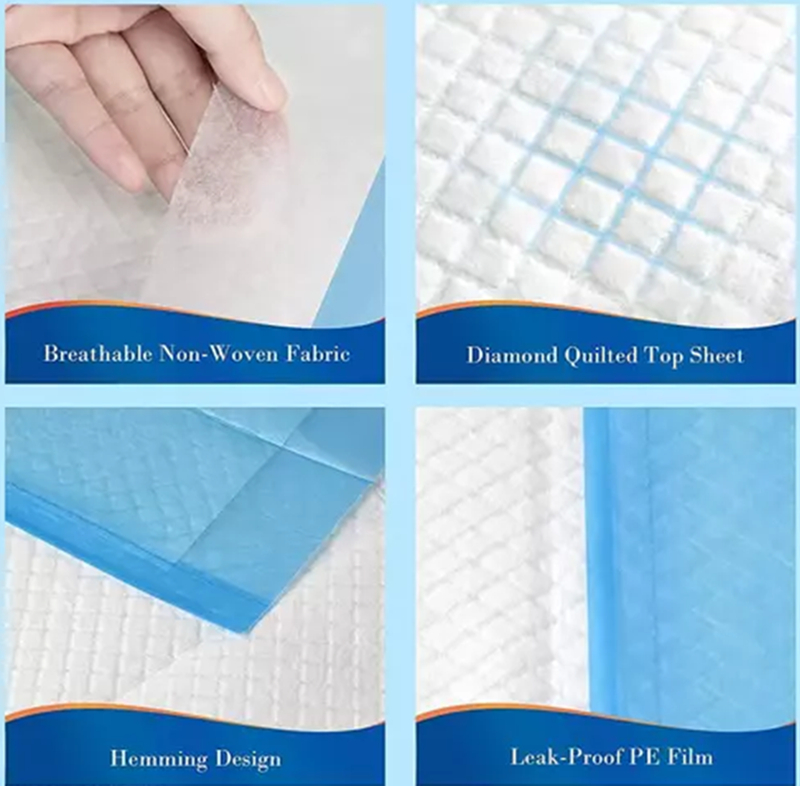
5. Eco-Friendly Options
- Environmentally Conscious Choices: With growing environmental concerns, some manufacturers offer disposable bed pads made with biodegradable materials. These pads aim to provide the same level of protection while reducing environmental impact.
Benefits of Using Disposable Pads in Hospitals
Using disposable pads in hospital settings offers numerous benefits, including enhanced hygiene, ease of use, and effective protection against leaks. They also reduce the workload for caregivers by minimizing the need for frequent bedding changes.
Features of High-Quality Disposable Bed Pads
Quality disposable bed pads are characterized by features such as waterproof backing, super absorbent materials, and comfortable top sheets. These features ensure effective fluid absorption and patient comfort.
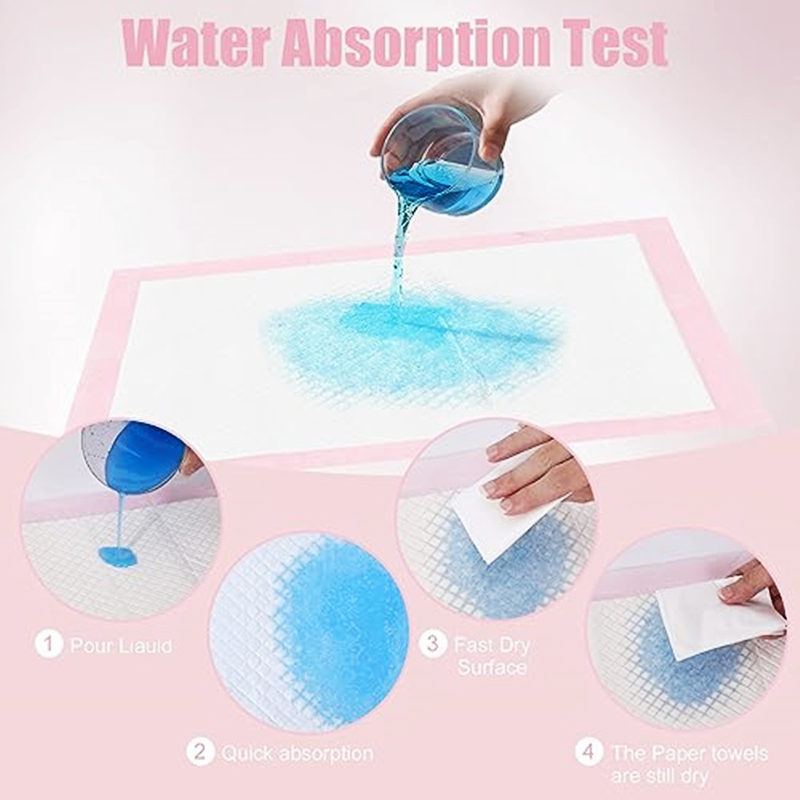
Selecting the Right Size and Absorbency
Choosing the right size and absorbency of bed pads is crucial for effective protection. The size should match the bed or furniture dimensions, and the absorbency level should correspond to the patient’s needs.
Disposable vs. Reusable Bed Pads
While disposable bed pads offer convenience, reusable bed pads are an eco-friendly option that can be laundered and reused. Each type has its advantages and is suitable for different situations.
How to Properly Use Disposable Bed Pads
Using disposable bed pads correctly is crucial for maximizing their effectiveness in protecting beds, chairs, and other surfaces. Here are the steps to ensure you are using these pads properly:
1. Unfolding the Pad
- Gently Open the Pad: Start by carefully unfolding the disposable bed pad. Do this gently to avoid tearing, especially if the pad is designed for high absorbency.
- Ensure It’s Fully Opened: Make sure the pad is fully opened so that all the absorbent layers are exposed. This ensures maximum surface area coverage and optimal absorbency.
2. Placing the Pad
- Identify the Absorbent Side: Determine which side of the pad is absorbent. This side is usually softer and quilted. It’s designed to face upwards to directly absorb any liquid.
- Position on Desired Surface: Place the pad flat on the surface you wish to protect, such as a bed or chair. Position it where the most protection is needed, usually where the person will sit or lie down.
3. Securing the Pad
- Using Adhesive Strips: If your disposable bed pad comes with adhesive strips, carefully remove the protective backing. Stick the adhesive parts to the surface to keep the pad securely in place. This step is particularly important for active users or on surfaces like chairs, where the pad might shift.
- Smooth Out Wrinkles: Once in place, smooth out any wrinkles or folds in the pad. This ensures the pad is comfortable to sit or lie on and prevents any areas from bunching up, which could lead to leaks.
4. Regular Checks and Changes
- Monitor and Replace as Needed: Regularly check the pad for wetness. If it’s soiled, it should be replaced with a fresh one to maintain hygiene and comfort.
- Dispose of Properly: After use, fold the pad with the soiled side inwards and dispose of it in a trash can. Avoid flushing disposable pads down the toilet as they can cause blockages.
5. Post-Use Surface Check
- Inspect the Protected Surface: After removing the used pad, inspect the bed, chair, or other surfaces to ensure they are dry and clean. If there is any spillage, clean the surface to prevent any odors or stains.
6. Storage and Handling
- Store Pads in a Dry Place: Keep unused disposable bed pads in a dry, clean place. Ensure the storage area is easily accessible for quick changes.
- Handle with Clean Hands: When placing a new pad, make sure your hands are clean to maintain the hygiene of the pad and the surface it’s protecting.
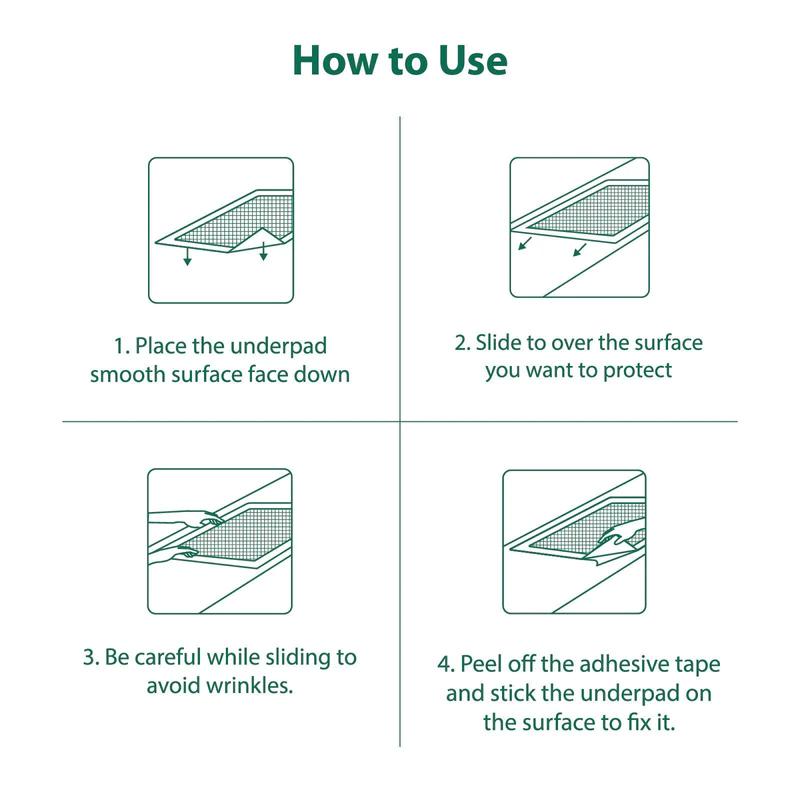
Purchasing Tips for Hospitals and Caregivers
When hospitals and caregivers are in the market for disposable bed pads, making informed purchasing decisions is crucial. These tips are designed to guide them in selecting the most suitable bed pads while also ensuring cost-effectiveness and a consistent supply.
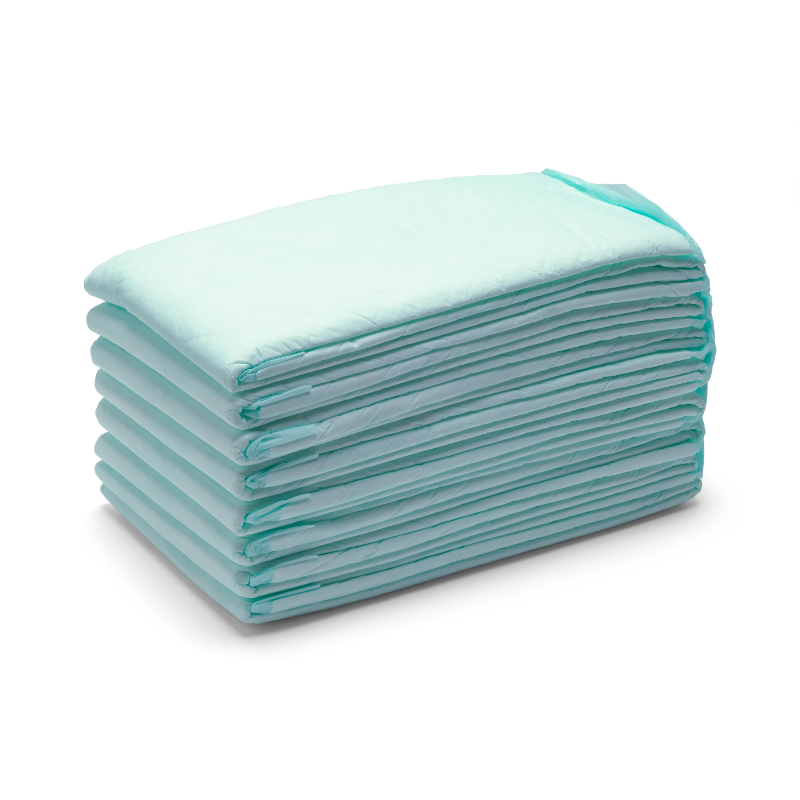
1. Assessing Absorbency Needs
- Match Absorbency to Incontinence Level: The absorbency level of bed pads should align with the severity of the patient’s incontinence. Pads come in various absorbency levels, from light to heavy, and choosing the right one is key to effective incontinence management.
- Consider Super Absorbent Options: For patients with heavy incontinence, especially during the night, opting for super absorbent pads can provide added security and reduce the need for frequent changes.
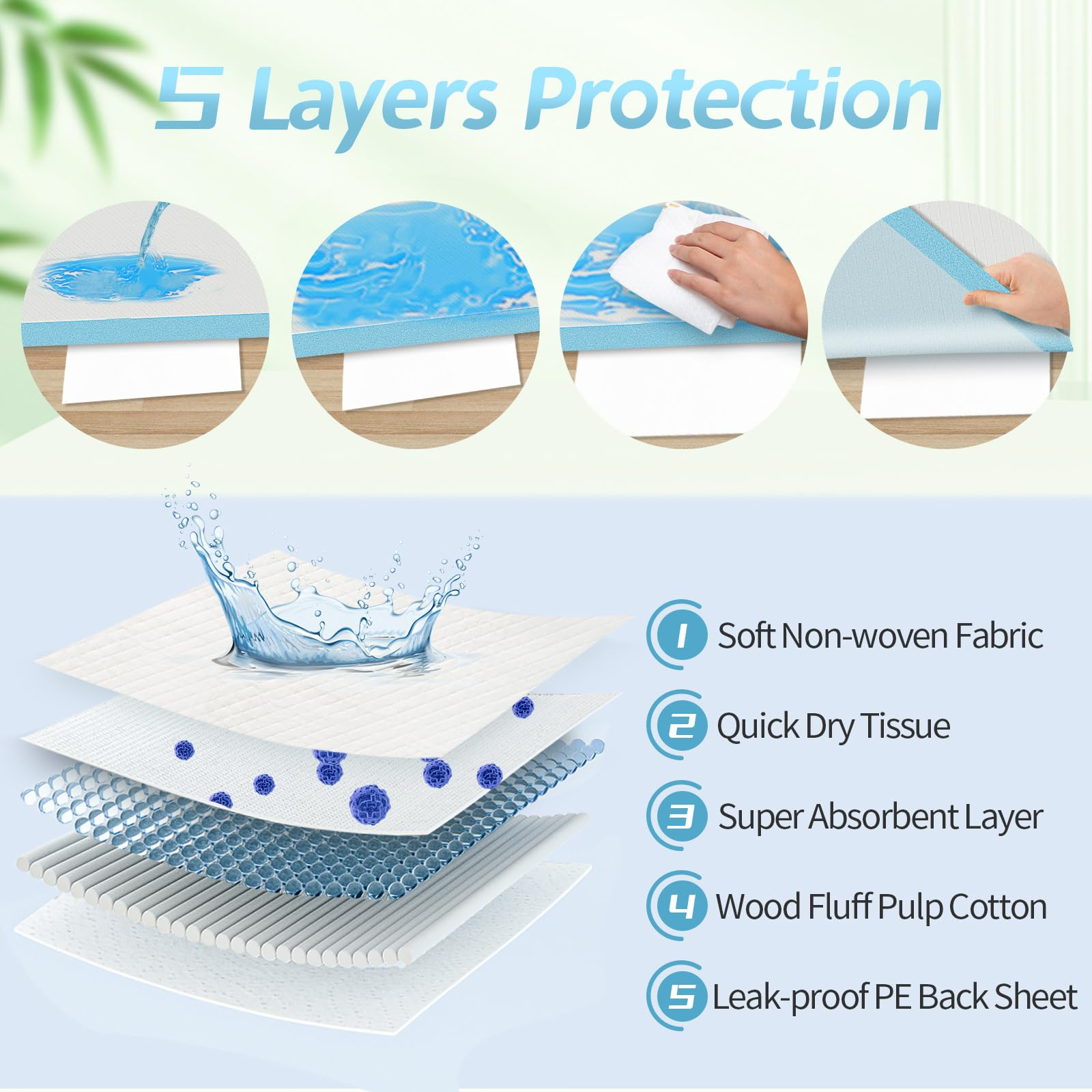
2. Selecting the Right Size
- Ensure Adequate Coverage: Size is another critical factor. The bed pad should be large enough to cover the area where the patient rests, preventing any leakage onto the bed or furniture. Common sizes like 30 x 36 inches are generally suitable for most hospital beds.
- Consider Bed and Furniture Dimensions: For use on chairs or other furniture, ensure that the pad dimensions are compatible with the furniture’s size for optimal protection.
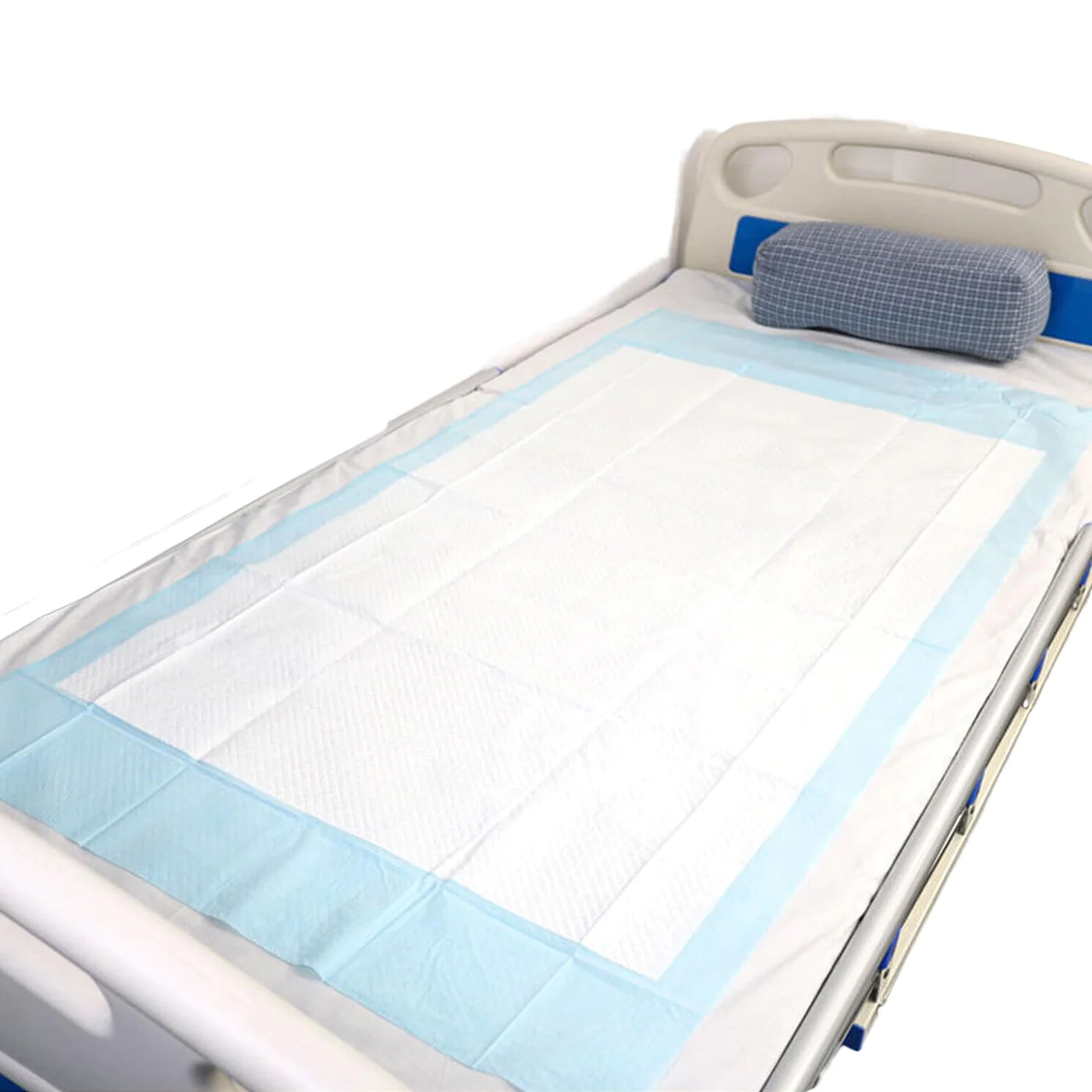
3. Prioritizing Patient Comfort
- Soft and Skin-Friendly Materials: Look for bed pads that have a soft top layer to ensure patient comfort. This is particularly important for patients with sensitive skin or those who are bedridden.
- Transpirabilidad: Breathable materials can prevent heat and moisture buildup, enhancing the comfort level for long-term users.
4. Bulk Purchasing Benefits
- Relación coste-eficacia: Buying disposable bed pads in bulk can lead to significant cost savings. Bulk purchasing often means lower per-unit costs, making it a budget-friendly option for hospitals and care facilities.
- Consistent Supply Assurance: Bulk buying also ensures that there is always a sufficient supply of bed pads on hand, which is crucial in high-demand healthcare environments.
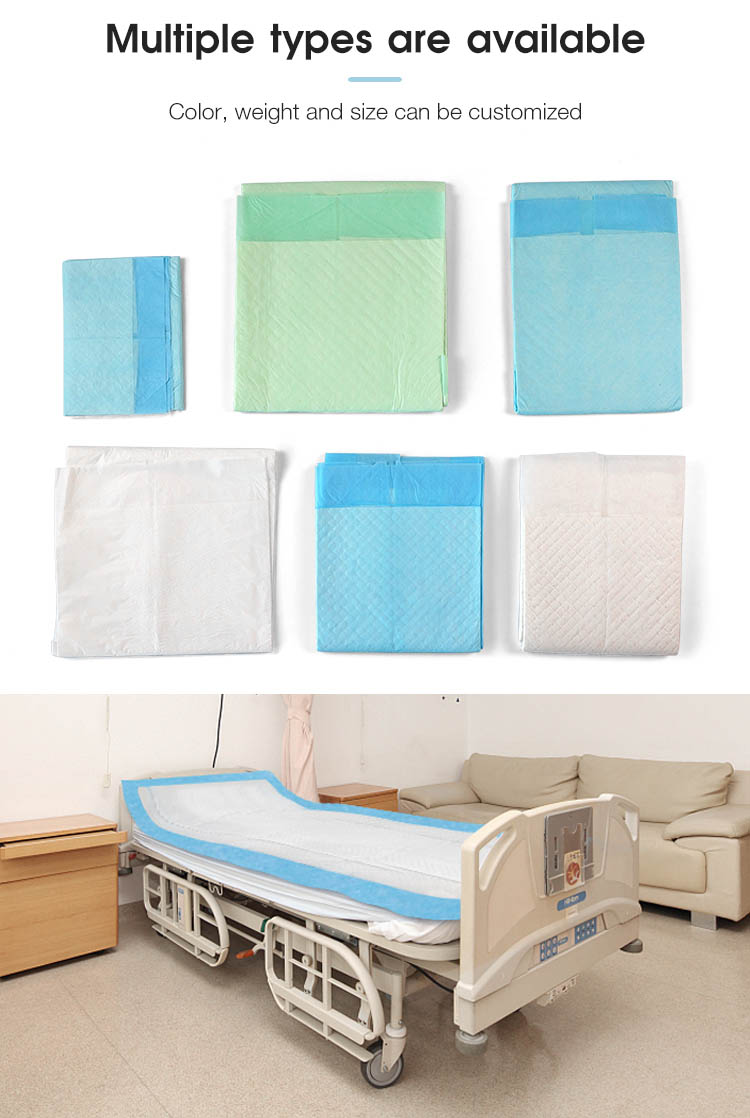
5. Evaluating Additional Features
- Waterproof Backing and Adhesive Strips: Consider pads with waterproof backing to protect bedding and furniture effectively. Pads with adhesive strips can be beneficial to keep them in place, especially for active patients or when used on seating surfaces.
- Odor Control: Some disposable pads come with odor control technology, which can be advantageous in maintaining a fresh and pleasant environment.
8. Supplier Reliability and Quality
- Choose Reputable Suppliers: Partner with suppliers(such as Wuhan Youfu) known for their quality and reliability. Consistent quality in products ensures that patients receive the best care.
- Read Reviews and Seek Recommendations: Checking reviews and seeking recommendations from other healthcare professionals can provide insights into product performance and supplier reliability.
Conclusión
Disposable hospital bed pads play a vital role in incontinence care, offering protection, comfort, and hygiene. Understanding their types, features, and proper usage is key for hospitals and caregivers to provide the best care to patients.
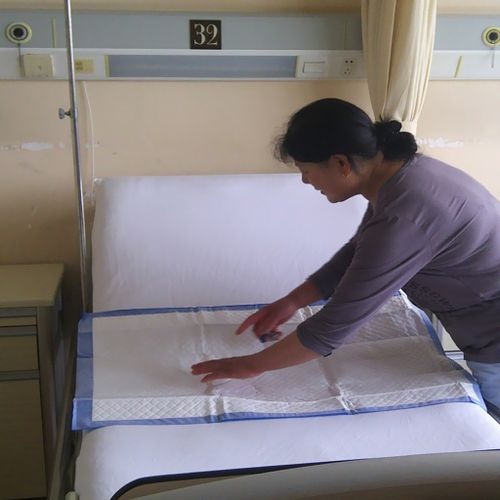
Preguntas frecuentes
- ¿Con qué frecuencia deben cambiarse los empapadores desechables?
- It’s recommended to change them whenever they are soiled to maintain hygiene and comfort.
- Can disposable bed pads be used for all bed sizes?
- Yes, they come in various sizes to fit different beds and furniture.
- Are disposable bed pads suitable for sensitive skin?
- High-quality pads with soft, breathable materials are generally suitable for sensitive skin.
- How do hospitals dispose of used bed pads?
- Used bed pads should be disposed of in a trash can. They should not be flushed down the toilet.
- Can disposable bed pads be used at home?
- Yes, they are also suitable for home use, especially for individuals with incontinence or bed-bound patients.

